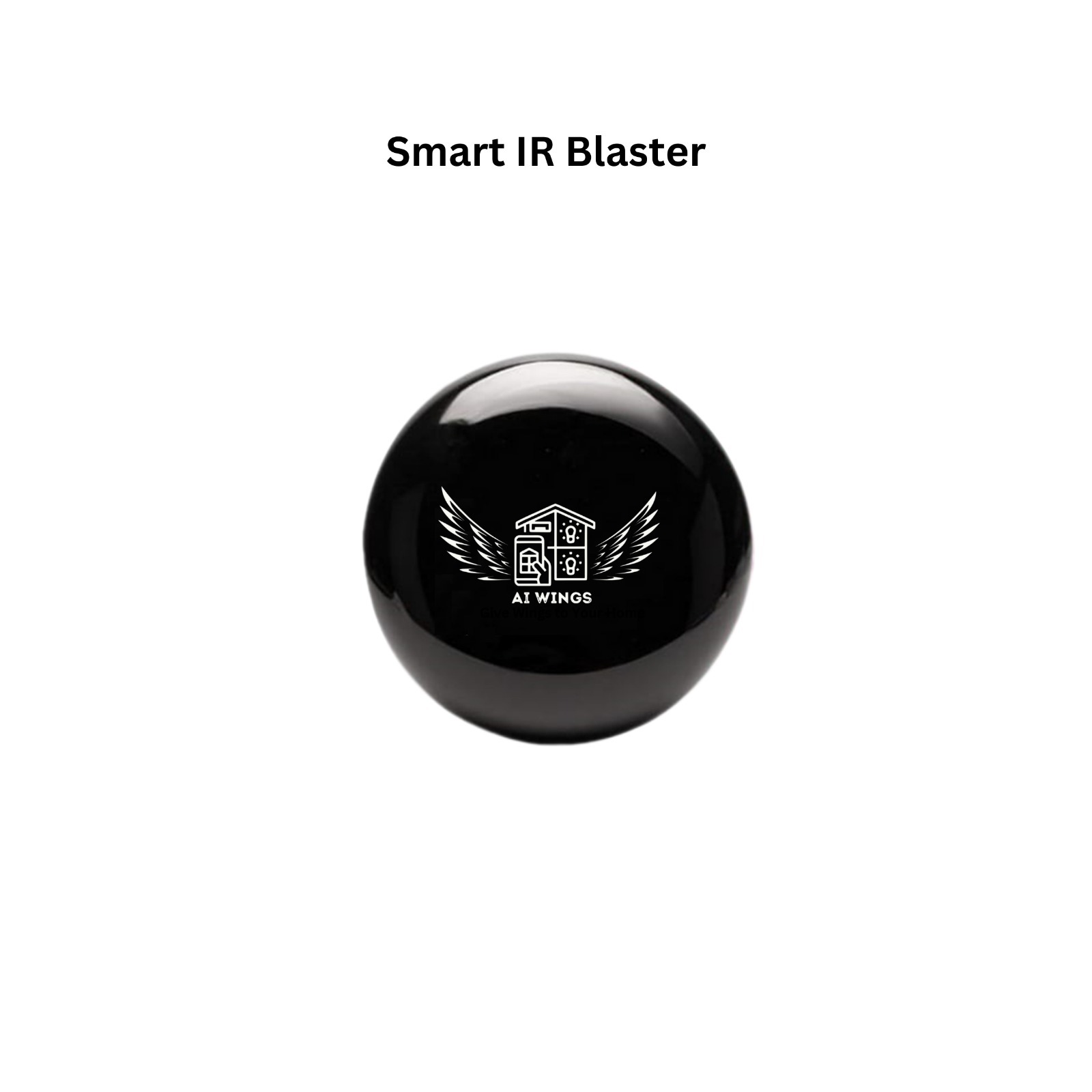Smart IR blasters come in several types, based on functionality, connectivity, and use case. Here's a clear breakdown to help you understand the different types and choose the one that suits your needs. 🧭 Types of Smart IR Blasters 1. 🔌 Basic IR Blasters (Wi-Fi Only) Purpose: Control traditional IR devices (TV, AC, etc.) via smartphone app Connectivity: Wi-Fi Examples: Teqooz, OakRemote, AZIOT, Moes ✔ Features: Control via Smart Life, Tuya, or brand-specific apps Compatible with Google Assistant and Alexa Requires line of sight with devices USB powered Best For: Budget smart homes, TV & AC control 2. 🌐 Advanced IR + RF Blasters Purpose: Control IR and RF (radio frequency) devices Connectivity: Wi-Fi Examples: BroadLink RM4 Pro ✔ Features: IR + RF (433 MHz/315 MHz) support Controls remotes for garage doors, fans, etc. Extensive device database + learning mode Alexa, Google Assistant, and IFTTT integration Best For: Full smart home coverage, including RF-based fans or blinds 3. 🧠 Hub-Based IR Blasters (Zigbee/Z-Wave + IR) Purpose: Part of a broader smart home hub (like Home Assistant or SmartThings) Connectivity: Zigbee/Z-Wave + IR Examples: Some Aqara hubs, Homey Pro ✔ Features: Integrates IR into multi-protocol smart home Full automation + scripting support Often used in DIY setups Best For: Advanced users, automation enthusiasts 4. 📺 IR Blasters Built into Smart Devices Purpose: Built-in to streaming boxes or speakers Examples: Amazon Fire TV Cube, Mi Box, some soundbars ✔ Features: Built-in IR blaster to control nearby devices Can power on/off your TV, sound system, etc. Combines streaming + control in one device Best For: Minimalist setups or home theaters 5. 💻 DIY IR Blasters (Custom/Arduino/RPi) Purpose: Made using Raspberry Pi, Arduino, or ESP8266/ESP32 Connectivity: Wi-Fi or Bluetooth Examples: DIY using ESPHome, Tasmota, NodeMCU ✔ Features: Custom code + automation Open-source platforms (Home Assistant, MQTT) Requires soldering/basic electronics skills Best For: Makers, developers, and tinkerers ✅ Which One Should You Choose? Use Case Recommended Type Basic AC/TV control Basic Wi-Fi IR Blaster IR + RF remote control Advanced IR+RF (BroadLink Pro) Full smart home integration Hub-based IR blaster All-in-one device + media box Fire TV Cube or Mi Box Custom automation projects DIY ESP8266 or Raspberry Pi
Chat with us on WhatsApp
×
This is your website preview.
Currently it only shows your basic business info. Start adding relevant business details such as description, images and products or services to gain your customers attention by using Boost 360 android app / iOS App / web portal.
https://www.tanushripowersolutions.in/latest-update/smart-ir-blasters-come-in-several-types-based-on/156
Smart IR blasters come in several types, based on ...

2025-05-22T04:45:17
Smart IR blasters come in several types, based on functionality, connectivity, and use case. Here's a clear breakdown to help you understand the different types and choose the one that suits your needs. 🧭 Types of Smart IR Blasters 1. 🔌 Basic IR Blasters (Wi-Fi Only) Purpose: Control traditional IR devices (TV, AC, etc.) via smartphone app Connectivity: Wi-Fi Examples: Teqooz, OakRemote, AZIOT, Moes ✔ Features: Control via Smart Life, Tuya, or brand-specific apps Compatible with Google Assistant and Alexa Requires line of sight with devices USB powered Best For: Budget smart homes, TV & AC control 2. 🌐 Advanced IR + RF Blasters Purpose: Control IR and RF (radio frequency) devices Connectivity: Wi-Fi Examples: BroadLink RM4 Pro ✔ Features: IR + RF (433 MHz/315 MHz) support Controls remotes for garage doors, fans, etc. Extensive device database + learning mode Alexa, Google Assistant, and IFTTT integration Best For: Full smart home coverage, including RF-based fans or blinds 3. 🧠 Hub-Based IR Blasters (Zigbee/Z-Wave + IR) Purpose: Part of a broader smart home hub (like Home Assistant or SmartThings) Connectivity: Zigbee/Z-Wave + IR Examples: Some Aqara hubs, Homey Pro ✔ Features: Integrates IR into multi-protocol smart home Full automation + scripting support Often used in DIY setups Best For: Advanced users, automation enthusiasts 4. 📺 IR Blasters Built into Smart Devices Purpose: Built-in to streaming boxes or speakers Examples: Amazon Fire TV Cube, Mi Box, some soundbars ✔ Features: Built-in IR blaster to control nearby devices Can power on/off your TV, sound system, etc. Combines streaming + control in one device Best For: Minimalist setups or home theaters 5. 💻 DIY IR Blasters (Custom/Arduino/RPi) Purpose: Made using Raspberry Pi, Arduino, or ESP8266/ESP32 Connectivity: Wi-Fi or Bluetooth Examples: DIY using ESPHome, Tasmota, NodeMCU ✔ Features: Custom code + automation Open-source platforms (Home Assistant, MQTT) Requires soldering/basic electronics skills Best For: Makers, developers, and tinkerers ✅ Which One Should You Choose? Use Case Recommended Type Basic AC/TV control Basic Wi-Fi IR Blaster IR + RF remote control Advanced IR+RF (BroadLink Pro) Full smart home integration Hub-based IR blaster All-in-one device + media box Fire TV Cube or Mi Box Custom automation projects DIY ESP8266 or Raspberry Pi
2025-05-22T04:45:17
Keywords
- types based
- makers developers
- minimalist setups
- power onoff
- home assistant
- ifttt integration
- google assistant
- clear breakdown
- case heres
- streaming boxes
- diy setups
- rfbased fans
- functionality connectivity
- raspberry pi
- raspberry pi arduino
- bluetooth examples diy
- esp8266esp32 connectivity wifi
- combines streaming control
- garage doors fans
- tv sound system
- control nearby devices
- devices usb powered
- alexa requires line
- brandspecific apps compatible
- smart life tuya
- smart ir blasters

Submit Your Enquiry